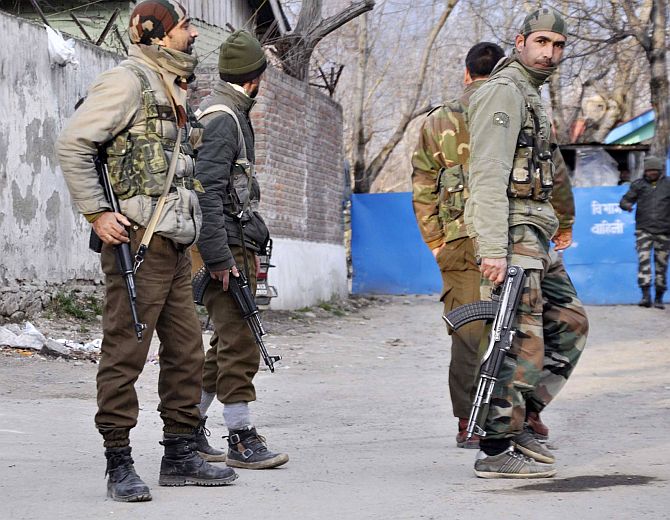- Joined
- Jan 30, 2015
- Messages
- 5,005
- Likes
- 8,882
M4 ?
Sent from my ASUS_Z00LD using Tapatalk
M4 ?
Then how do we differentiate a jihadist and soldier.The day the entire force of a particular unit wears the same uniform when in active ops is the day we attain a new level of force maturity. It is no wonder that jihadi pigs can wear anything that looks like a regular uniform and they can virtually blend in.

Here alone, one can see how members of the same unit have different outfits
M4, TavorM4 ?
Sent from my ASUS_Z00LD using Tapatalk
Brown pants could be J&K police?The day the entire force of a particular unit wears the same uniform when in active ops is the day we attain a new level of force maturity. It is no wonder that jihadi pigs can wear anything that looks like a regular uniform and they can virtually blend in.

Here alone, one can see how members of the same unit have different outfits
SOG,JKP.Brown pants could be J&K police?
RR is not some regular force but a special force so its common thing, havent you played games like CD modern warfare? Spec ops executives in such games are seen wearing t shirts and jeans along with their utility belts bullet proof vests equipments and shitThe day the entire force of a particular unit wears the same uniform when in active ops is the day we attain a new level of force maturity. It is no wonder that jihadi pigs can wear anything that looks like a regular uniform and they can virtually blend in.

Here alone, one can see how members of the same unit have different outfits
Also, with clear unit name patches on the plate carriers in the back and front

Well not for any unit in the Army but certainly for Central and State police forces, NSG, SWAT and other Law enforcement agencies.You cannot have that, For various reasons ..




Wonderful camouflage based on Marpat, The co lour combination is similar to those of Indian Army, I hope Army adopts this just basic Marpat ..
The camouflages in both pictures looking different..............
Special forces of Indian Army with unique pattern based on marpat ..
Censor the name as well.
Special forces of Indian Army with unique pattern based on marpat ..
The camouflages in both pictures looking different..............

| Thread starter | Similar threads | Forum | Replies | Date |
|---|---|---|---|---|
|
|
Indian Army Says Its New Artillery Chief "Spearheaded Artillery Modernisation". | Indian Army | 8 | |
|
|
Modernisation for Indian 105mm Light Field Guns. | Indian Army | 91 | |
|
|
Update On Indian Navy Force Modernisation | Indian Navy | 14 | |
|
|
How Indian Navy is expanding and modernising | Indian Navy | 0 |
